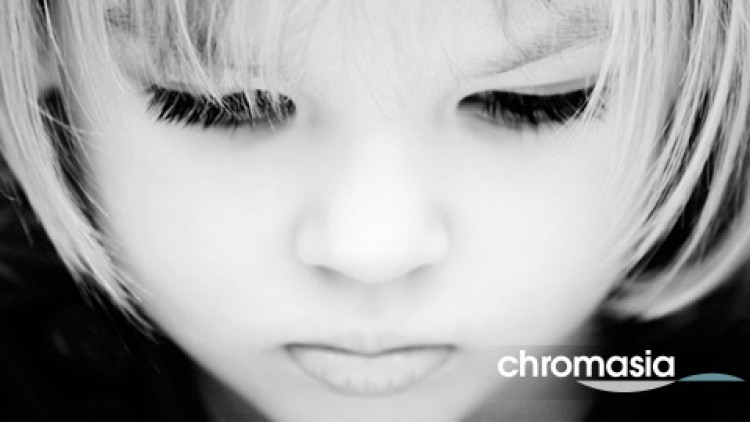The Art of Black and White Photography
- Description
- Curriculum
- FAQ
- Reviews

Many of the most powerful, memorable and effective photographs are black and white images. With digital photography though you can no longer take a great black and white photograph… but you can create one using the black and white photography techniques taught in this course. So if you’re confused about which black and white conversion techniques to use, unsure about how to adjust the tonal range and balance of your black and white photos using curves and masks want to make more of your black and white portraits and you want to learn how to tone your black and white images this course is for you. What black and white photography techniques are you going to learn:
* You’re going to learn how to use a range of powerful flexible and non-destructive black and white conversion techniques. You’re will learn which are the most useful and powerful e.g. the Channel Mixer and Black and White tool when to use one technique rather than another and which techniques to avoid (and why).
* You will learn how to evaluate the tonal range and tonal balance of an image and then how to make global and selective changes using adjustment layers selections masks and the Curves tool: four of the most powerful tools and techniques within Photoshop.
* You’ll then learn how to use these tools and techniques to overcome some of the unique problems you’ll face when converting your portraits to black and white including how to delineate your subject from the background how to work with skin tones to maximise detail or smooth your subject’s skin and how to enhance your subject’s eyes.
* You’ll learn how to add unique and complex tones that will really bring your black and white images to life.
* You’re going to learn how to embed all of these tools and techniques into a flexible powerful and repeatable
workflow.
* But this isn’t just a course about post-production and Photoshop: each video will also enable you to develop the skills and give you black and white photography tips you need to create not only technically optimal black and white photographs but ones that are aesthetically striking too.
* When you create a black and white image pressing the shutter is just the start. Sign up for The Art of Black and White Photography and take the next step now. Downloads are ENABLED for this course!
-
1Promo video
David J. Nightingale
chromasia.com/training
Photography and post-production training for photographers -
2Lecture Slides
This PDF contains the slides used during each of the lectures.
--
David J. Nightingale
chromasia.com/training
Photography and post-production training for photographers -
3Lecture images (28 files)
In this zipped archive you'll find 28 images (2 RAW files, 5 layered Photoshop files and 21 JPEGs: all at around 1500px wide) that you can download and work through as you go through the lectures. The images are named in the order in which they appear in the course.
--
David J. Nightingale
chromasia.com/training
Photography and post-production training for photographers
-
4Black and White conversion techniques, an introduction
In this video we take our first look at the range of black and white conversion techniques we’ll be covering during this course. We'll then take a detailed look at some of the simpler techniques: how they work, when you should use them, and the degree of control they offer over the back and white conversion process. We conclude by summarising the limitations of these simpler techniques.
--
David J. Nightingale
chromasia.com/training
Photography and post-production training for photographers -
5The twin Hue/Saturation black and white conversion method
In this video we take a detailed look at the Twin Hue/Saturation method of creating a black and white: a non-destructive technique that provides relatively limited control over the black and white conversion process. We then go on to consider why such control is important control is important, particularly in terms of meeting your creative aims for an image. We conclude by taking a look at why a higher degree of control is often be required.
--
David J. Nightingale
chromasia.com/training
Photography and post-production training for photographers
-
6Converting to black and white using the Channel Mixer
In this video you will learn how to use the Channel Mixer to convert your images to black and white, a tool that offers a high degree of control over the black and white conversion process.
--
David J. Nightingale
chromasia.com/training
Photography and post-production training for photographers -
7Converting to black and white using the Calculations method
In this video you will learn how to use the Calculations method to create a black and white image. This is a destructive technique, and quite complex to master, but it is a powerful and flexible method of creating a black and white image.
--
David J. Nightingale
chromasia.com/training
Photography and post-production training for photographers -
8Converting to black and white using the Black and White tool
In this video you will learn how to use one of Photoshop's most powerful and flexible black and white conversion methods, the Black and White tool.
--
David J. Nightingale
chromasia.com/training
Photography and post-production training for photographers -
9Converting to black and white using the Camera Raw plugin
In this video we take a detailed look at how to use the Camera Raw plugin in Photoshop to convert your images to black and white. This is a powerful technique, and the only one we'll be discussing that allows you to convert your image during the RAW conversion process. However, unlike many of the other techniques we discussed previously, it does have its limitations, particularly in terms of embedding it within an overall workflow.
--
David J. Nightingale
chromasia.com/training
Photography and post-production training for photographers
-
10Enhancing tonal range and contrast, an introduction
In this video we begin by taking a look at the features of a colour image contribute towards making it easier to create a stunning black and white image DURING the black and white conversion process. From there we move on to explain tonal range and the histogram, before taking a look at how you can adjust the tonal range and brightness of your images using the Levels tool.
--
David J. Nightingale
chromasia.com/training
Photography and post-production training for photographersFollow us on Facebook, Google+ and Twitter.
</p>
-
11Enhancing tonal range and contrast using the Curves tool
The Curves tool can be intimidating, at least at first, but it is the most powerful, most useful, and most flexible tool within Photoshop, and can be used to adjust both the tonal range and contrast within your images in precise and targeted ways. In this video we take a detailed look at how to use this tool.
--
David J. Nightingale
chromasia.com/training
Photography and post-production training for photographers -
12Masking: Selective adjustments and blending conversion techniques
In this video we begin by taking a look at the limitations and problems associated with Dodging and Burning, a technique you can use to make selective adjustments to the tonal range and tonal balance of your images. From there we move on to work through a range of detailed examples, each of which will teach you how to use multiple adjustment layers and masks to make selective and targeted adjustments to your images to greatly increase their impact. In the final section you will learn how and why to blend multiple black and white conversion techniques within a single image.
--
David J. Nightingale
chromasia.com/training
Photography and post-production training for photographersFollow us on Facebook, Google+ and Twitter.
</p>
-
13Black and white portraiture, an introduction
In this video we begin our discussion of black and white portraiture by taking another look at the tools and techniques we discussed in previous lectures, particularly in terms of how these can be used to delineate your subject from the background.
--
David J. Nightingale
chromasia.com/training
Photography and post-production training for photographers -
14Working with detail and skin tones
In this video you will learn how to soften and smooth skin tones during the black and white conversion process: to remove blemishes, brighten the skin and so on. This is an especially useful technique for portraits of women and children. Using exactly the same tools you will learn how to maximise detail, a technique well suited to male portraiture. As you'll see though, in both instances, this can involve some counter-intuitive decision making at the outset.
--
David J. Nightingale
chromasia.com/training
Photography and post-production training for photographers -
15Enhancing your subject's eyes
In this video you will learn how to convert a portrait (or any other image) to black and white using Lab Color mode, a powerful alternative to RGB. You will learn the basics of Lab, before moving on to discover why this can be a useful technique for black and white portraiture.
--
David J. Nightingale
chromasia.com/training
Photography and post-production training for photographers -
16Converting a portrait to black and white using Lab Color mode
In this video you will learn how to convert a portrait (or any other image) to black and white using Lab Color mode, a powerful alternative to RGB. You will learn the basics of Lab, before moving on to discover why this can be a useful technique for black and white portraiture.
--
David J. Nightingale
chromasia.com/training
</p>
Photography and post-production training for photographers
-
17Toning and colorizing a black and white image
In this, the first of two videos on toning and colorizing your images, you will learn how to use a range of tools to: apply a single colour to an image, how to split-tone an image using Camera Raw, and how to apply a duotone within Photoshop. You will also learn how to incorporate toning into your black and white workflow.
--
David J. Nightingale
chromasia.com/training
Photography and post-production training for photographers -
18Advanced toning techniques
In this, the final video in The Art of Black and White photography, you will learn how to add multiple and complex tones to your image using a range of powerful and flexible tools. These include the Gradient Map, the Color Balance tool, the Channel Mixer, the Selective Color tool, and my personal favourite, the Curves tool.
--
David J. Nightingale
chromasia.com/training
Photography and post-production training for photographers











